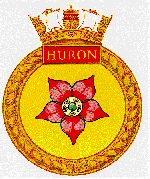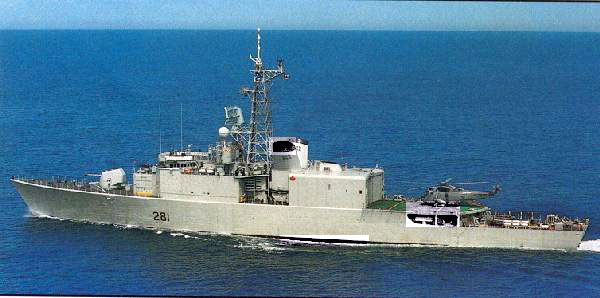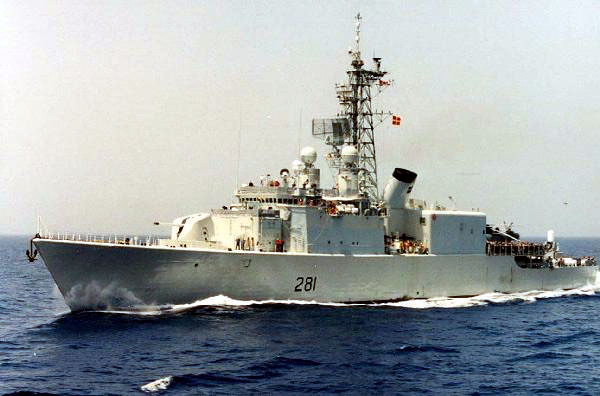 HMCS
HURON represented Canada at the Silver Jubilee naval review at Spithead
on June 28, 1977 and in 1981 carried Governor-General Edward Schreyer on
a tour of five Scandanavian ports. She also served as the test bed for
the VLS installed in the TRUMP'ed Tribals and the Canadian Patrol Frigates. HMCS
HURON represented Canada at the Silver Jubilee naval review at Spithead
on June 28, 1977 and in 1981 carried Governor-General Edward Schreyer on
a tour of five Scandanavian ports. She also served as the test bed for
the VLS installed in the TRUMP'ed Tribals and the Canadian Patrol Frigates.
Since joining Canadian Fleet Pacific in 1987, Huron was among the first Canadian ships to visit Vladivostok, Russia in 1990. At the end of the Gulf War in 1991 she was the first Canadian ship to enter Kuwait having been deployed to succeed the three Canadian ships that led the Multinational Logistics Force in support of the War. After that tour of duty, she sailed to Lauzon Quebec to undergo her TRUMP refit and was the last of her class to do so. In October of 1993, HURON relieved ALGONQUIN which was on patrol in the Adriatic sea. Huron was a major participant in support of Citizenship and Immigration Canada's operation to stop illegal boat migrants from coming to Canada in 1999. |

